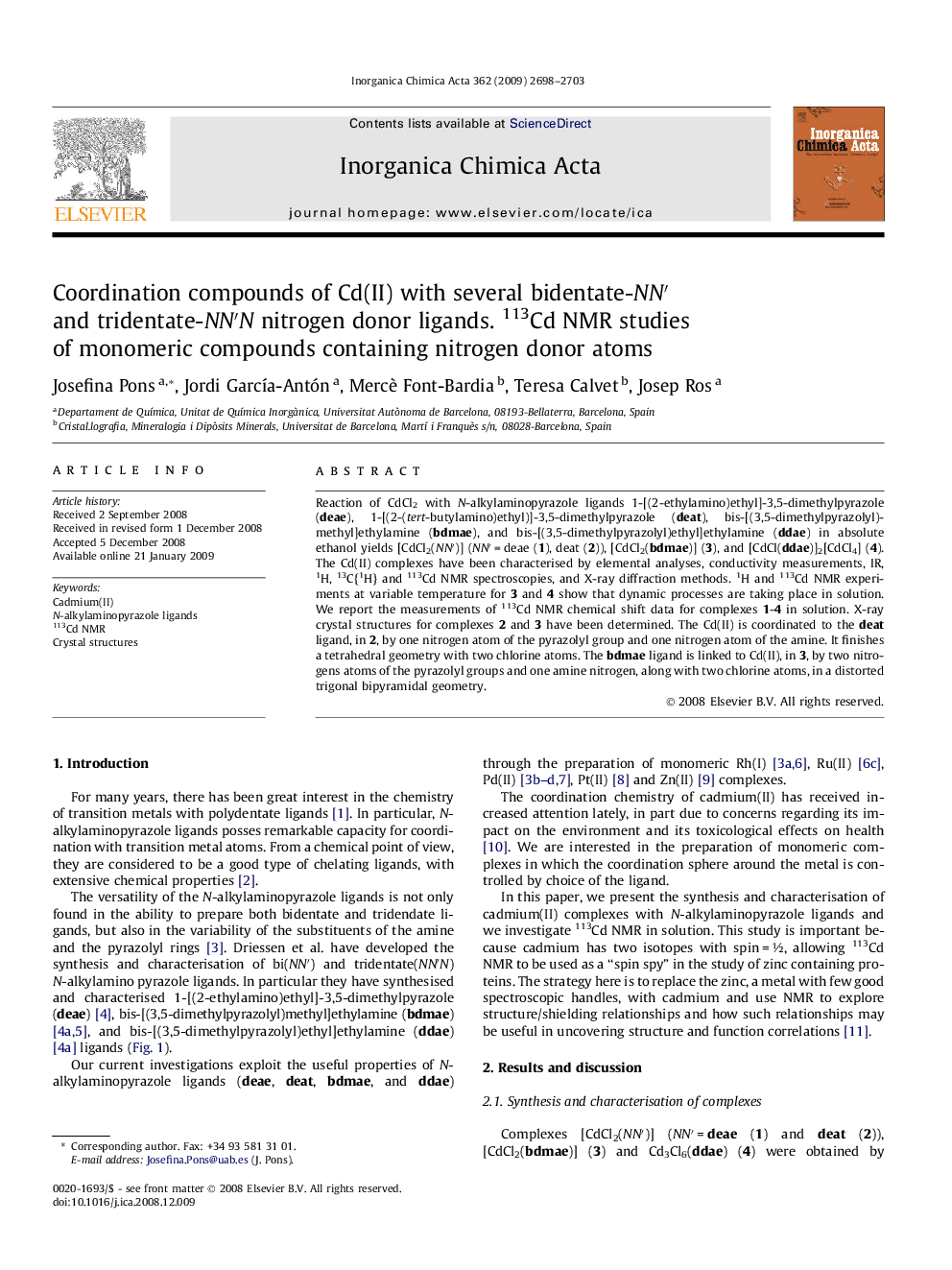| Article ID | Journal | Published Year | Pages | File Type |
|---|---|---|---|---|
| 1308731 | Inorganica Chimica Acta | 2009 | 6 Pages |
Reaction of CdCl2 with N-alkylaminopyrazole ligands 1-[(2-ethylamino)ethyl]-3,5-dimethylpyrazole (deae), 1-[(2-(tert-butylamino)ethyl)]-3,5-dimethylpyrazole (deat), bis-[(3,5-dimethylpyrazolyl)methyl]ethylamine (bdmae), and bis-[(3,5-dimethylpyrazolyl)ethyl]ethylamine (ddae) in absolute ethanol yields [CdCl2(NN′)] (NN′ = deae (1), deat (2)), [CdCl2(bdmae)] (3), and [CdCl(ddae)]2[CdCl4] (4). The Cd(II) complexes have been characterised by elemental analyses, conductivity measurements, IR, 1H, 13C{1H} and 113Cd NMR spectroscopies, and X-ray diffraction methods. 1H and 113Cd NMR experiments at variable temperature for 3 and 4 show that dynamic processes are taking place in solution. We report the measurements of 113Cd NMR chemical shift data for complexes 1-4 in solution. X-ray crystal structures for complexes 2 and 3 have been determined. The Cd(II) is coordinated to the deat ligand, in 2, by one nitrogen atom of the pyrazolyl group and one nitrogen atom of the amine. It finishes a tetrahedral geometry with two chlorine atoms. The bdmae ligand is linked to Cd(II), in 3, by two nitrogens atoms of the pyrazolyl groups and one amine nitrogen, along with two chlorine atoms, in a distorted trigonal bipyramidal geometry.
Graphical abstractThe reaction of CdCl2 with several NN′- or NN′N-alkylaminopyrazole derived ligands yields [CdCl2(NN′)], [CdCl2(NN′N)] or [CdCl(NN′N)]2[CdCl4]. We report the 113Cd NMR chemical shift for all compounds in solution. 1H and 113Cd NMR experiments at variable temperature show that dynamic processes are taking place in solution. X-ray crystal structures of two complexes have been determined.Figure optionsDownload full-size imageDownload as PowerPoint slide
